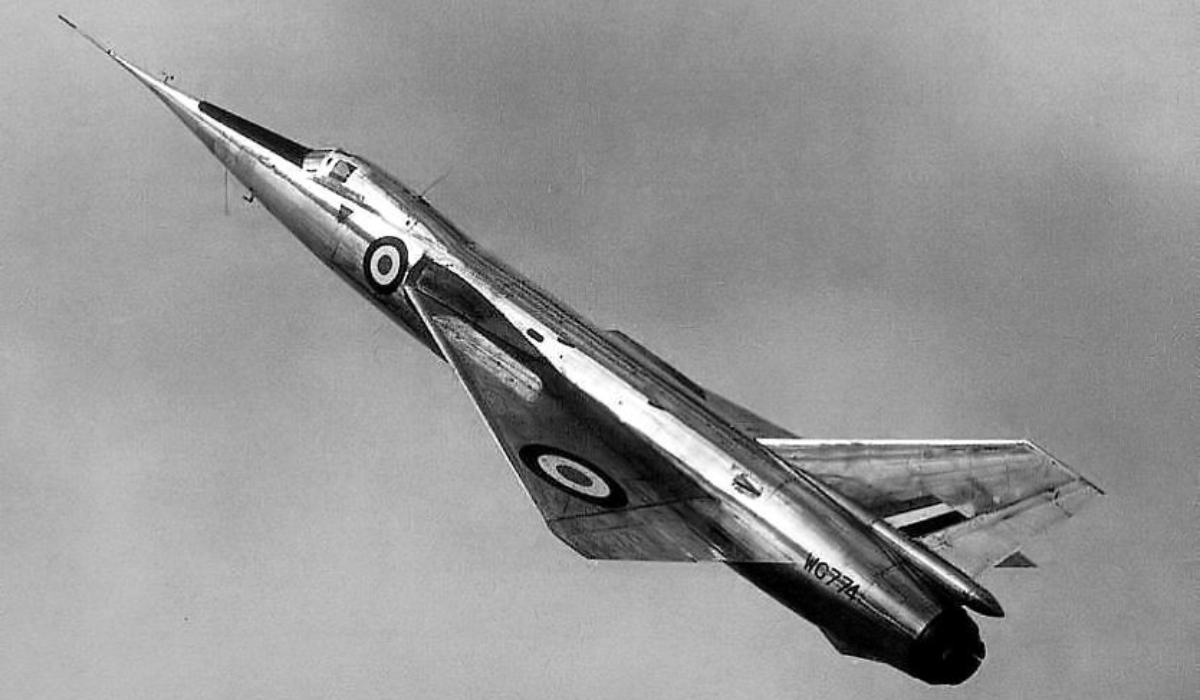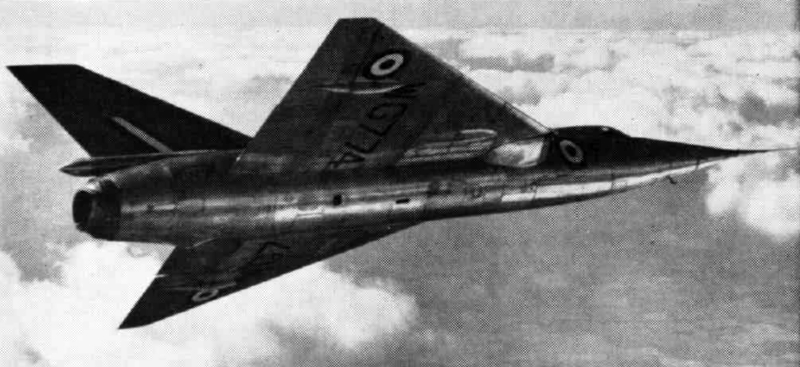It was clear that the Delta 2 could easily break the current world air speed record due to the ease with which it entered the supersonic regime, without any of the violent behavior experienced by previous kinds in the transonic region
The Fairey Delta 2 was a supersonic research aircraft built to examine the behavior of a delta planform with 60 degrees of sweep on the leading edges of the wings when traveling at speeds considerably over Mach 1. In addition, in March 1956, the first Delta 2 broke the world air speed record, surpassing the 823mph held by Col. Horace Hanes in a North American F-100C Super Sabre, in one of the greatest achievements in British aviation history. The two examples built (serials WG774 and WG777) and flown proved to be invaluable research tools over a long period of time.
The ease with which the plane entered the supersonic regime, without any of the violent behavior experienced by other types in the transonic area, as related by Tony Buttler in his book Cold War Delta Prototypes, was what made clear that the Delta 2 could easily break a new world air speed record. After reaching Mach 1.56 in November 1955, the flight crew realized the record may exceed 1,000 mph. Everything was kept as secret as possible after preparations for the record attempt were under way. In fact, the cover story worked so well that many engineers were unaware of what was going on until just before the attempt actually started.
Since that WG774 was based at Boscombe Down, it was decided to plan a flight path between Chichester and the Royal Navy base at Ford across West Sussex. Ground observation and recording sites were established at both locations. Because this approximated the level for optimal performance and also guaranteed a good contrail, the flying height was set at 38,000 feet (the latter was essential for ground tracking). It had been required to fly in hot weather for earlier record attempts employing subsonic (i.e., Mach-limited) aircraft in order to lower the Mach number appropriate for a given airspeed. Yet, the coldest atmosphere was required for the Delta 2 in order to improve the engine’s thrust.
The General Post Office put up extensive telephone services that were directly connected to lines installed for a now-disused airfield. Also, the most sophisticated British Army radar system was made available in two full installations. Every day, No. 29 Sqn’s Gloster Meteor NF 11 night fighters took off to calibrate the radars, check the communication systems, and determine the true contrail height. During the Delta 2’s sorties, a specially calibrated de Havilland Venom measured the height as WG774 flashed by.
The two aircraft would be guided into the best positions by the ground radar, but getting WG774 into the proper position and altitude at the appropriate time required exact timing and exceptional piloting abilities. Everything was set up and prepared for “Exercise Metrical” by March 7.
Lt Cdr Peter Twiss, the Delta 2’s lead test pilot for manufacturer’s trials flying, made nine flights between March 7 and March 10 in excellent weather for the time of year, but on each sortie, either technical issues with the ground equipment or some other factor prevented a new record from being set. He always took off in a westerly direction and traveled along a route that maximized the usage of the fuel load.
Over the New Forest, a climb was completed, and from that point on, the aircraft continued to accelerate continuously until the run came to a close. After the eastward pass, Reheat was canceled, and WG774 made a wide 180-degree turn over the water before Twiss pulled it back in to repeat the entire process in a westerly direction. Approximately 24 minutes of flight time were spent in a landing at Boscombe Down following a minimum-power let-down (following the record run Twiss landed without enough fuel to make an overshoot and another approach).
The record was finally secured by a tenth flight that took off at 1121 hours on March 10, 1956. The two runs’ speeds of 1,117.6 mph and 1,146.9 mph produced a mean speed of 1,132.1 mph. This translated to a mean Mach number of 1.731 and an indicated air speed (IAS) of 983.7 knots (a maximum of Mach 1.8 was recorded during the flight). With WG774 flying for 2.8 minutes at a speed more than Mach 1.6, Peter Twiss increased the world air speed record by no less than 37%. Even after each run, the airplane continued to accelerate.

The public press went crazy after the record was revealed on March 11. The record had a significant impact across the globe and was well-appreciated in general. Stuart Scott-Hall of the Air Ministry was in the USA when the record flight took occurred, and he discovered that the Americans generously acclaimed the achievement. He thought it true to say, however, that ‘they were quite astonished. For months they had been reading that the British aircraft industry had failed to produce the goods in this direction and in that. They would have had good excuses for thinking that the British were in a bad way. The capture of the record gave the British aircraft industry a tremendous uplift, while Americans concerned with high-speed aircraft development, no matter what type of wing they favored, swept wing, straight wing, or delta, appeared to be equally surprised at the performance achieved.’
WG774 was being serviced a few days later when the press arrived at Boscombe Down, therefore the second Delta 2, WG777, had its fuselage serial number swiftly altered to WG774 in order to be ready for the cameras. At the SBAC Farnborough Airshow in September 1956, Fairey planned to show the public the speed of the aircraft.
Piloted by Gp Capt Gordon Slade Slade and Twiss, WG774, and WG777 would attempt a supersonic crossover directly over Farnborough at 38,000ft and produce level-flight sonic bangs, which had not been publicly demonstrated in Britain at the time (these would be audible on the ground some 25 seconds later). The Delta 2s’ routine proceeded without a hitch during practice for the presentation, but wet weather made it impossible for them to do it at the actual airshow.
On Dec. 12, 1957, the USA reclaimed the record with a speed of 1,207.6mph set by a McDonnell F-101A Voodoo.
Cold War Delta prototypes is published by Osprey Publishing and is available to order here.

Photo by Crown Copyright, U.S. Air Force

